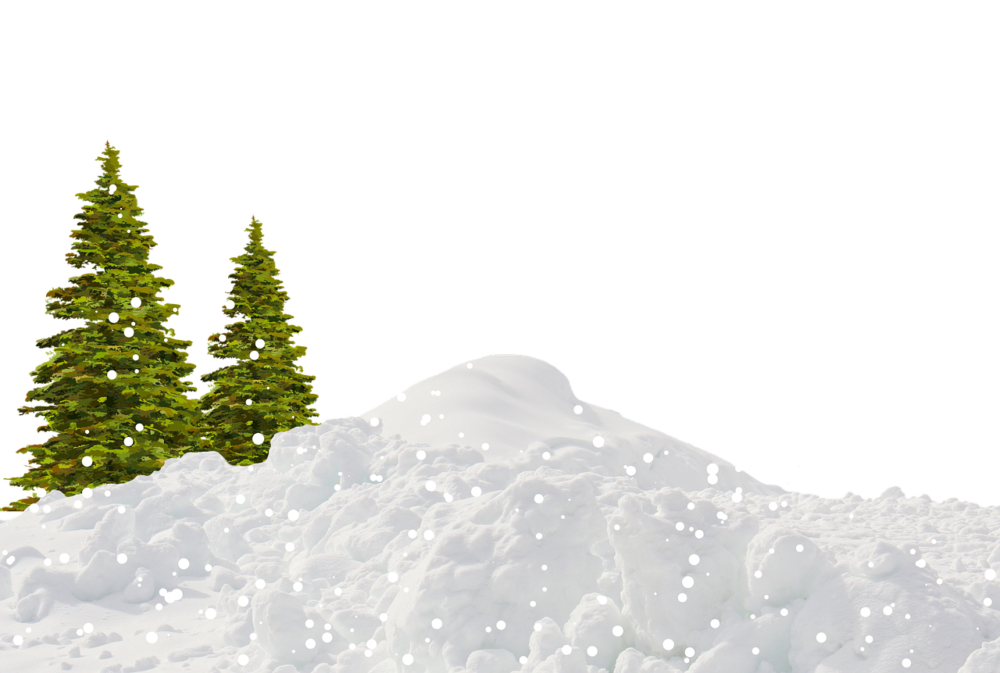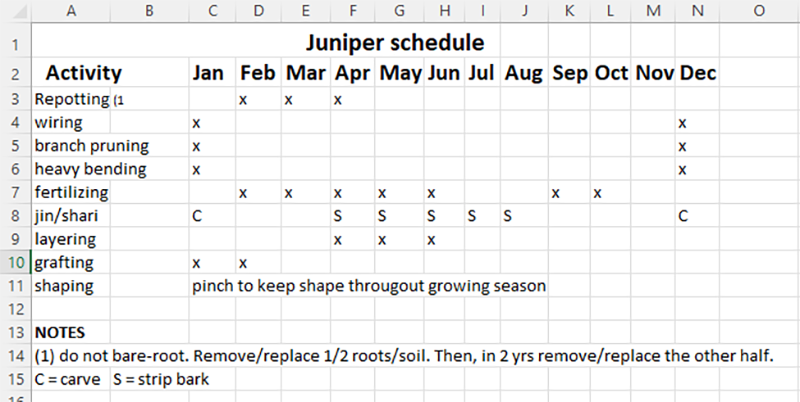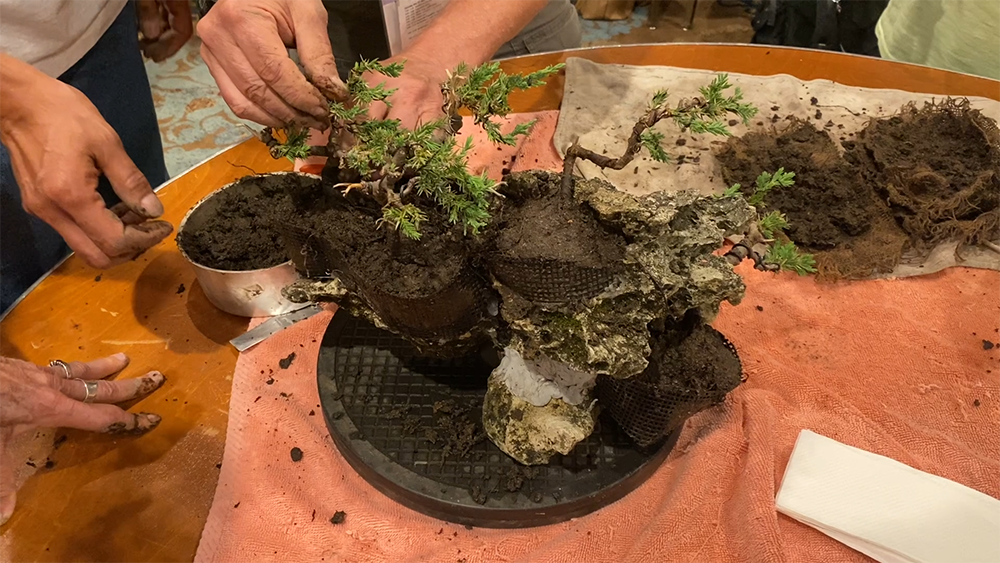13 November, 2022
0 Comments
2 categories
by Les Lonsdale
We sometimes think of Winter as a ‘dormant’ time for the bonsaist since there’s not much you can do with the trees right now. However, after you read the list below, I’m sure that you will agree that there’s really not much inactive time for us. We’d better get busy, especially here in the deep South, where we only get a few short months before Spring. So get off your ‘can’ and get started so Springtime won’t find you falling behind.
- Clean up your trees – remove dead leaves, moss, weeds, etc., from the pots – insects and their eggs and larvae love to reside in such places. Also, pull off any remaining dead leaves from deciduous trees and brown needles from conifers. Remove algae and moss from the trunks and surface roots of all trees. If the tree will not be repotted in Spring, remove the top 1/2″ soil, aerate the soil with a chopstick, then apply fresh soil mix and a top dressing such as granite grit. A weed preventer can also be sprinkled on top of the new soil mix.
- Use a dormant spray on bare deciduous trees such as Volck oil or Lime Sulfur (diluted 10 tsp/gal.) to kill overwintering pests. Allow lime sulfur to dry before watering tree so it does not get washed into the soil. Do not spray lime sulfur on evergreens with leaves.
- Evaluate and reshape trees –Plan future designs – draw them out on paper or find examples of a tree with the desired design for your tree. Note trees that need grafting or airlayering, so that when it is time, you know which trees to work on. HINT: Use different color pipe cleaners to remind you of different tasks for each tree. Reshape and lightly trim branches, making refinements that are hard to see when the tree is full of leaves. Remove the old wire and rewire if necessary, but be careful, for most trees are more brittle when dormant. Let tree dry out for a day or two before rewiring to make branches more pliable. If making severe bends [conifers only], coat any cracks or splits in bark with cut paste.
- Stage trees according to repotting schedule – Make notes of which trees are the first to bud and have them easiest to get to when it is repotting time. Some trees can wait until later in the season: [crape myrtle, azalea, broadleaf evergreens, conifers], but others start popping in early Spring: [elm, maple, privet, etc].
- Be prepared to protect trees in case of hard freeze – Have a sheltered corner of the yard or a shed that you can put the trees in temporarily if there comes a hard freeze, in order to prevent possible die-back of sensitive branches or cracked ceramic pots. Even setting the pots on the ground under the benches will help.
- Water sparingly – Don’t overwater during Winter since the trees are bare, and evergreen leaves are not transpiring as they do when active. Water would just sit in the root system and possible drown the trees roots. But don’t let them dry out completely either, as the roots need to stay damp. John Naka, when asked about how much water to give bonsai, reportedly replied, “It is easy… not to wet, not too dry.”
- Prepare benches – replace broken or rotten wood, wash with a bleach solution (1:9), allow to dry, and apply wood preservative/sealant.
- Prepare pots – wash with a bleach solution (1:9). Use vinegar and a scrub brush to remove white lime deposits. Securing screens in pots now will save much time during the actual repotting frenzy.
- Prepare soil mixes– don’t wait until repotting time to prepare soil mixes. It takes time to screen the components and mix them together. Save yourself a headache and take care of it NOW. Also, get your screens and wire ready to go.
- Prepare tools – Clean all rust away, sharpen, sterilize in bleach or alcohol, dry, and oil.
- Gather hardwood cuttings for rooting or grafting in Spring. Store in a baggie containing damp sand in the fridge. Spray inside bag with hydrogen peroxide to prevent mold or fungus.
- Dig new material Now is the time to begin looking for new prospects. Either mark trees and come back just before bud-break to dig them, or dig them now. Also, this is a good time to collect seeds and stratify them in your refrigerator in a bag with damp sand until Spring.
13. Carve jin/shari – now, during the dormant season.
14. Heavy bends on conifers – now is the best time while the sap is not flowing.
There, that should keep you busy until time to repot, which here in the South is just around the corner!
Category: Bonsai Skills, Bonsai Tree Care


